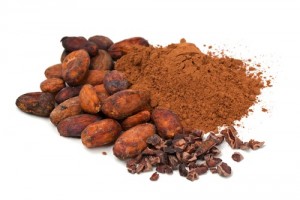FREE SHIPPING ON ORDERS OVER $75
What’s My Chocolate Footprint?
Those who love chocolate and those who love adorable animals of all types often have quite a bit of overlap. Who could possibly dislike either? But for a long time it seemed like  enjoying chocolate carried a risk of environmental degradation.
enjoying chocolate carried a risk of environmental degradation.
Luckily, scientists have stepped up to measure and analyze the chocolate footprint of chocophiles. You can not only find out what a chocolate footprint is, but also buy chocolate that offsets production of CO2.
What’s In A Name
One chocolate company manufactures more than all but three of the top sweets producers in the world. Therefore, it’s putting it mildly to say that they know what they’re doing. A recent study done by this company determined that the majority of emissions involved in chocolate production are a direct factor of the milk involved — more specifically, the cows that produce said milk. Humans love cows for any number of reasons, from cheeseburgers to leather jackets, but they’re far from good for the planet: cows produce more CO2 than the cars we drive each day.
Those who prefer dark chocolate will have a smaller footprint by definition than those who prefer milk. However, if you love the smooth and creamy taste of milk chocolate, fear not! The industry is working on ways to minimize the carbon footprint of each bar.
Water, Water Everywhere
Chocolate requires moisture in order to go from cocoa beans to fondue fountains. Water is an increasingly scarce resource, no matter where you live, and chocolate takes up a lot of water in order to get into a wrapper: Farm-Zero reports that a kilogram of chocolate requires 20,000 liters of water. This figure may seem absurdly high, but relatively speaking it’s not so bad: a pound of beef requires twice as much water as a pound of chocolate in order to get to your table, so vegetarian chocolate lovers have room to crow.
The vast majority of this H20 goes towards creating the cocoa bean paste that will become chocolate when mixed with milk and butter. However, water is also needed to grow the sugar that will give it its superb flavor.
Reducing Carbon Through Chocolate
If carbon and water use of chocolate seems overwhelming, fear not: there’s good news regarding your favorite snack. Elephant Journal reports that you can now buy chocolate bars that include carbon credits, meaning that each purchase reduces the production of greenhouse gasses while also giving funding towards green-energy infrastructure like wind and solar power. These chocolate bars — conveniently titled Climate Change Chocolate Bars — pack a whopping 132 pounds of carbon offsets per bar. That’s the rough equivalent of ten gallons’ worth of gasoline negated by your love of the sweet stuff in life.